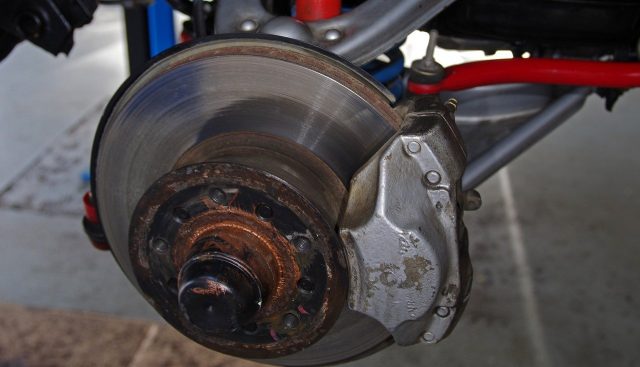Last Updated on March 13, 2023 by
Every automobile has a wheel bearing. They are even used in bicycles because they utilize wheels to move. There are many different types and sizes of approaches available, depending on the model and make of your vehicle. During wheel rotation, a wheel bearing prevents friction, causing the wheel to slip. Wear and tear on wheel bearings can cause your car to slow down unintentionally or prevent it from moving at all.
You’ll notice a lot of squeaky noises and shakiness when the car slows down. That means your bearings need to be replaced if you see anything like that. Bearings on your front wheels or rear wheels may need to be changed. Occasionally, you may need all of them replaced. A mechanic can help you determine which ones need to be replaced.
Front wheel bearing replacement cost
If you need to replace your car’s front and rear wheel bearings, the cost will vary depending on the model. Two expenses are incurred in conjunction with this service: The charge of the parts and the labor cost. Sadly, said money is usually spent on labor than on parts. You don’t want to risk wrecking your car by doing the job yourself if you don’t know anything about auto mechanics.
Front-wheel bearing replacement is more expensive. Average labor costs range from $350 to $450, and the middle parts cost ranges from $150 to $300.
Rear and front wheel bearings replacement cost
In general, you should expect to spend between $800 and $1,000 total on a new set of wheel bearings for your vehicle. You will likely have to pay more than expected if you do not have a warranty plan that covers this expense.
The cost of replacing a front bearing will depend on several factors.
Read More: Garage Side Entry Door: A Comprehensive Guide About Garage Side Entry Door
The cost of bearing replacement will depend on several factors, including your geographic location, local labor rates, how easy it is to access the bearings, the make and model of your vehicle, as well as whether you choose to have it done professionally or do-it-yourself. Replacing front wheel bearings on most new cars is not an overly complicated process but requires specialized tools and training to do it safely. The cost of parts and labor can add up, so be sure to get an estimate before starting any repairs.
Time Conduct when replacing bearings
Replacing wheel bearings is a job that can easily take four to five hours, so it’s best not to attempt it if you have somewhere you need to be. On some vehicles, wheel bearings are easy to access. There may be an exposed wheel bearing on the outer edge of the wheel or wheel hub, allowing for removing the entire unit without too much difficulty. It is also possible that your vehicle requires partial disassembly of components surrounding the wheel hub before access is available. This will require more time and effort on your part but is still a job that someone with basic mechanical skills can manage. You should expect this type of repair to take between six and eight hours.
Types of wheel bearing
First of all, there are three main types of bearings used in the front hubs:
- Flange bearings (for example, GM’s Delco-manufactured units) are not available separately and must be replaced entire assembly if one unit fails.
- Double-row tapered bearings (commonly known as “sealed for life” bearings); these can be purchased at your local parts store and must be pressed in and out of the hub.
- Tapered bearings (Toyota’s design); these were used on front hubs from the factory but can be replaced by Delco-style flange bearing for a performance/longer life upgrade due to slightly higher load rating and ability to be repacked with grease.
What are the steps involved in replacing wheel bearings?
- Park your car on a level surface and apply the parking brake.
- Chock the rear wheels.
- Jack up the vehicle and support it with jack stands (or a lift).
- Remove the wheel.
- Remove the brake caliper, rotor, and pads (if applicable).
- Disconnect the steering linkage from the spindle (if applicable).
- Remove the cotter pin, castle nut, and washer from the axle nut (if appropriate).
- Remove the axle nut (if applicable).
- Remove the hub/knuckle assembly from the car (if applicable). The attached axle assemblies may need to be rotated along with the knuckle to give enough clearance for removal.
- Use a press or other device to push out the inner race, making sure you do not damage either of the races in any way. It would help if you used something like oversized tubing (1-1/2″ od should work) between the bearing and press since there isn’t room for it inside the spindle hole, you can use a big screwdriver between one end of the tube and bearing then put another one at 90degrees with that to prevent slipping; then clamped in a vice to stall out bearing, then used a 3/4″ socket on the other end of the tube to push it out.
- Remove all bearings from both races, clean off old grease with solvent or brake cleaner, inspect races for pitting, if severe replace!
- Inspect the spindle shaft for wear and damage; there is no need to remove it just yet, but you should use some penetrate after step 13 since this will be easier while it is still in place on the car.
- Press new bearings into the outer race (don’t forget spacers/seals between inner and outer), lubricate splines generously with high-temperature grease (lithium-based). Do not neglect the small space between the spindle and frame.







